On Pearl Street in Provincetown, the Fine Arts Work Center’s new fellows are settling into their apartments and studios. For now, the spaces are all but empty. The white, unadorned walls of the studios are the blank canvases on which the visual art fellows will create new projects over the next seven months. A writer’s dining room table, empty except for an orchid and a bunch of bananas, is the waiting surface on which all sorts of lives will be imagined.
“It’s wonderful when the fellows finally arrive, and we show them to their studios and apartments, and they realize these beautiful, light-filled spaces are theirs for the next seven months,” says Sharon Polli, FAWC’S executive director.
FAWC awards 20 fellowships each year: 10 to writers and 10 to visual artists. Each gets an apartment, a $1,250 monthly stipend, and an entire winter to work on whatever they want, with no obligations.
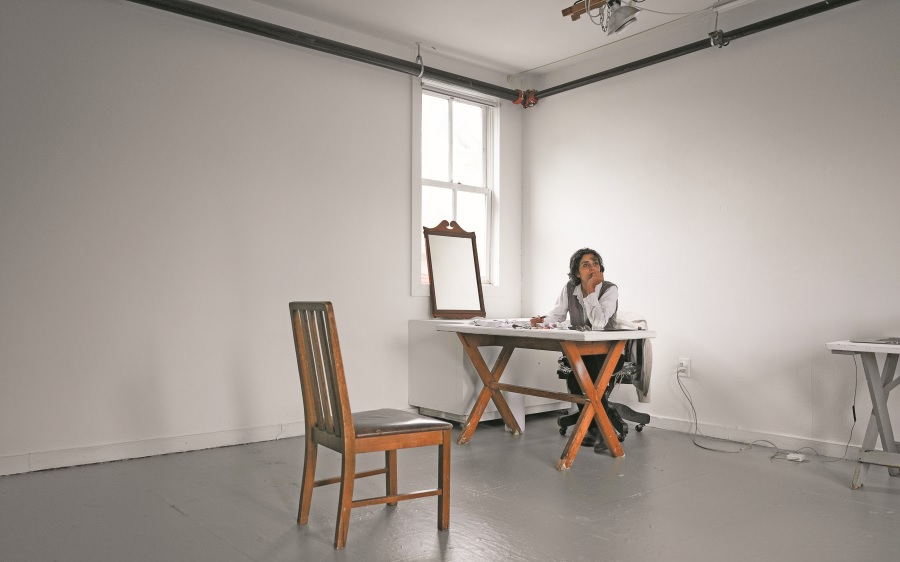
Zeinab Shahidi Marnani works in the corner of her studio, taking in the room’s grand blankness, contemplating all the big things to come. Marnani, who came to Provincetown from Tehran, is a multidisciplinary artist. She holds an M.F.A. in sculpture from Yale School of Art, is a documentary filmmaker, and is currently focused on collage.
“I appreciate being by myself; there’s no pressure,” she says, carefree but focused. “You have the time and space to work.” Her only concern going into the residency is that she will create something so large that it can’t be moved: “What if I can’t take it home?”
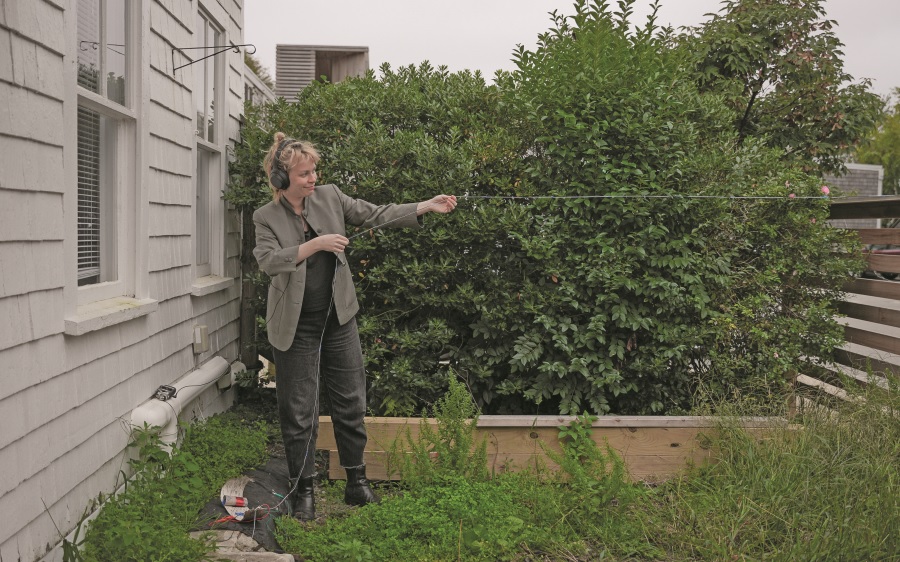
This is Tinja Ruusuvuori’s second year here. Every year, FAWC reserves four spots for returning fellows who get a special perk: choosing their own studio space. “I really wanted to hang something long, so I chose this one,” she says, looking up at the high ceilings in her studio, imagining the artwork she might create and then put up there.
The airy space is a fitting environment for a documentarian who observes and takes in everyday occurrences other people might ignore. Outside her studio, Ruusuvuori, listening for radio waves with a kite, notices a chrysalis hanging between the wooden spokes on a nearby fence. “I think it’s going to be a monarch,” she says.
Ruusuvuori says she hopes to start a radio station in the studio this winter: “People can come share whatever they want and experiment.”
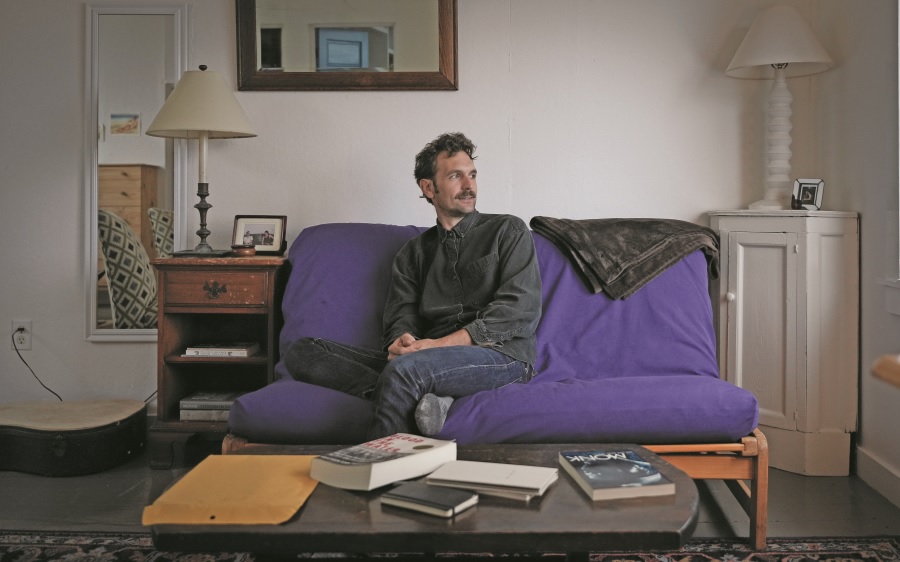
David Hutcheson’s apartment, one of the few that aren’t on FAWC’s Pearl Street campus, overlooks Provincetown Harbor. Hutcheson is a poet and returning fellow. He was last here in 2017, when he met his girlfriend, the poet H.R. Webster; this year, she remained in Hudson, N.Y. with their dogs.
“I didn’t write for four years, and I’ve just come back to it at the beginning of this year,” says Hutcheson. “I’m pretty hungry. I know what I want to work on, and I’m excited to get to it.”

It’s Miguel Braceli’s first time in Provincetown. “It’s like a fairytale town,” he says.
Braceli makes “public art projects,” ephemeral installations displayed out in the open, that often engage the bodies and movements of human beings as part of their design. For Braceli, the FAWC fellowship is “a good opportunity to understand a new place and to create a specific project about that place.” He plans to engage Provincetown’s landscape in a “community-based project” this spring.
As for day-to-day life, Braceli is excited to have a studio close to where he’s living. “This is an opportunity to be focused only on my work,” he says.
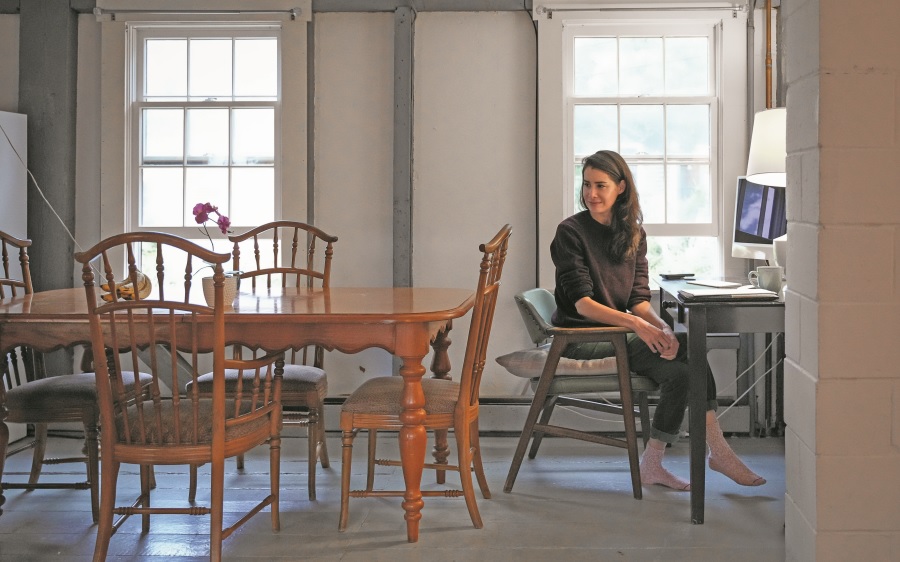
“Sorry for the floors,” says Molly Anders, standing in her otherwise pristine apartment, the largest one on FAWC’s campus. “My partner is bringing a vacuum next week.”
Although the apartment comes with a designated office space, Anders has set up her writing station in the living room, currently empty except for a few pieces of furniture and, of course, her thoughts. She’s already knee-deep in a short story collection that’s been eight years in the making. “Every time I add a story, another one falls out,” she says.
For Anders, the time and space that the fellowship provides to write isn’t a luxury but a necessity. The Kentucky native says the opportunity offers her a break from working as a journalist in England. “FAWC has always been the crème de la crème of residencies,” she says, “mostly because of the amount of time you’re given to create.”
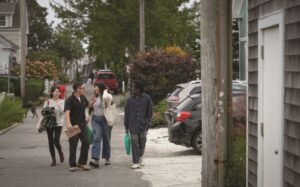
In the Stanley Kunitz Common Room, other fellows — mostly the younger ones — gather for an optional viewing of Mischa Richter’s documentary I Am a Town. The film, a contemplation of Provincetown’s legacy as a sanctuary for immigrants, queers, and artists, serves as a solid introduction. After the film, they’re excited — realizing they’re about to play some part in Provincetown’s storied history.
“It was cool to watch what it means to be here,” says Canadian writer Lindsay Miles, a mix of awe and apprehension in her voice. “I’m scared this is going to go by really fast.”
Beside her, Agnes Walden, a painter from New York, reflects on her new surroundings. “It’s perfect,” she says. “I feel like I’m walking on a movie set.”
Chicago writer Avigayl Sharp is still in disbelief. “I’m waiting for the ball to drop a little,” she admits. “It’s not normal to get paid to make art.”
